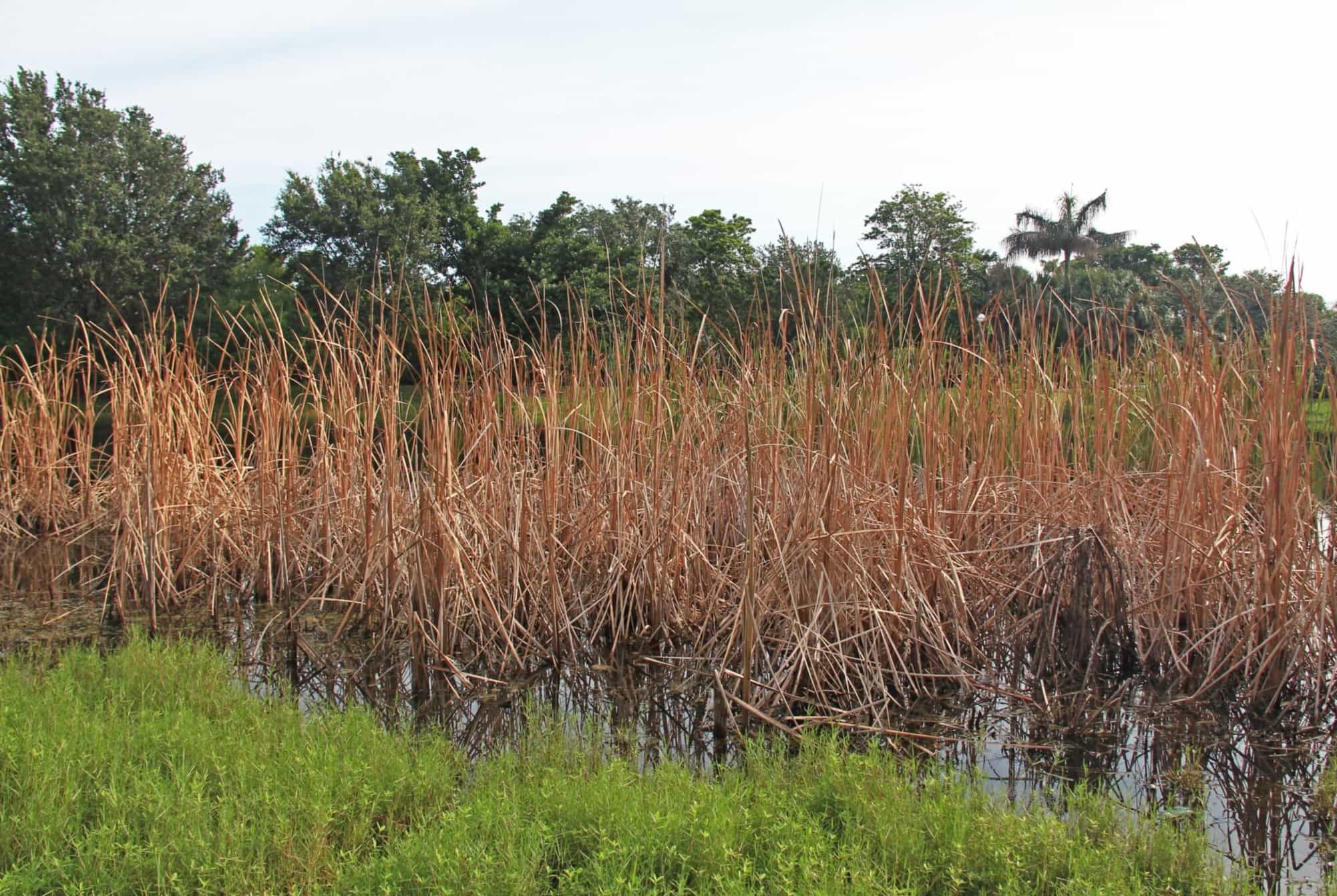Pond grass can quickly get out of control, covering the water’s surface with unsightly green mats. While it provides some shade and food for fish, too much grass overwhelms the pond, using up oxygen and preventing beneficial algae growth. Luckily, with a bit of strategic effort, you can clear away the excess grass through natural methods. Avoid using herbicide chemicals which can contaminate the water. Here are 5 effective ways to remove pond grass manually and restore the ecological balance:
1. Physically Remove Floating Grass
For grass floating on the pond’s surface manually scoop or rake it out. Use a pond skimmer net on a long pole to sweep across areas of scattered grass and collect it. For concentrated patches use a rake with floating tines to gather grass into piles for easy removal. Work systematically around the entire perimeter. Be thorough – leftover fragments can reroot.
2. Cut and Remove Rooted Grass
Submerged grass anchored to the bottom requires a different approach. Use an aquatic weed cutter tool specialized for pond use to sever grass a few inches above the bottom Then rake out the severed tops Remove all cut pieces so they don’t replant. Repeat cutting and raking until no more grass regrows. Hire pond maintenance professionals for deep areas.
3. Drain and Dry Out Shallow Ponds
For very shallow decorative ponds, an effective option is to periodically drain out all the water and let the pond dry completely. This exposes rooted grass to kill it. Scrape basin sides with a hoe to dislodge any remaining roots. Once fully dried out, refill the pond. Repeat drying as needed.
4. Shade Out Grass Growth
Prevent new growth by shading the pond bottom. Products like non-toxic dyes limit light penetration through the water. Floating covers also create shade barriers. Maintain cleaned mats or blankets to block sunlight from underwater grass.
5. Introduce Grass Carp
These plant-eating fish provide natural ongoing grass control. They efficiently consume various pond weeds without chemicals. Be sure to obtain certified sterile triploid grass carp in legal sizes for your area. Stock according to recommended densities.
6 Pond Grass Prevention Tips
Once grass is under control, take proactive steps to discourage regrowth:
-
Remove decomposing vegetation and muck which fertilizes grass.
-
Maintain proper aeration and oxygen levels in the water.
-
Use barley straw extract to inhibit growth without harming fish.
-
Divert external nutrient sources like stormwater runoff around the pond.
-
Plant native bog vegetation around the edges to soak up excess nutrients.
-
Allow beneficial algae to establish which shades out bottom grass.
-
Introduce native microorganisms to balance the pond ecosystem.
When to Consider Herbicide Application
Manual removal should always be the first approach for pond grass control. However, in extreme cases of highly invasive varieties like torpedo or Eurasian watermilfoil, very targeted herbicide application may become necessary as a last resort if manual methods fail. Only consider this after consulting an aquatic weed control professional to ensure ecological safety. Always use pond-approved herbicides per label directions and never treat the entire area at once.
Let Your Pond Ecosystem Flourish Naturally
With consistent maintenance and prevention measures, you can keep pond grass in check and enjoy clear water for recreation. Rely on natural techniques as much as possible to sustain a healthy habitat for fish, plants and other aquatic life. A balanced pond with the right aeration, beneficial organisms and light control can prevent excessive grass growth on its own. Maintain the equilibrium through ecologically safe methods for lasting results.

How to Get Rid of Weeds in Ponds & Lakes: Aquatic Weed Control Tips
FAQ
What eats grass in ponds?
What causes grass to grow in ponds?
How do you get rid of vegetation in a pond?
How do you get rid of pond grass?
Pond grass can ruin the attractiveness of a pond, lead to a buildup of sludge, and prevent fish and insects from surviving within the pond. This might take several applications, but the boiling water will not hurt anything in the pond. Spray Roundup Weed & Grass Killer on the grass.
How to control weeds in a pond?
You can also use a pond rake for weakly rooted plants. Before you start, drain water from your pond for easy removal. As the name suggests, grass carp lives on aquatic vegetation and is the best fish for weed control in ponds. For controlling weeds on large pond and lakes, Grass Carp is the best biological method.
How do I get rid of Floating Weeds in my pond?
Simply adding more aeration to your pond to promote more water movement will also help prevent some floating weeds from being able to establish, as they typically prefer still water. If weeds are more established, either a contact or systemic herbicide may need to be used.
How to remove weed from a pond with a root system?
Pond rake with handle and rope – For submerged weed with a root system, you can use weed razor or pondweed cutter. This is very easy to use tool. All you have to do is to throw it over weed area and pull the rope. When you pull it, the blades will cut the weeds. It is a lightweight tool and hence throwing is very easy.
